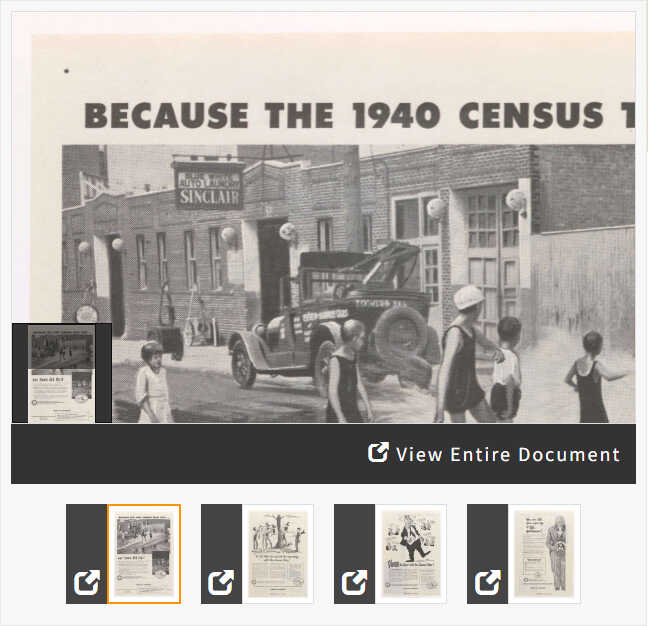In this activity, students will analyze advertisements created by the Ad Council as PSAs (public service announcements) to build support for cooperating with the 1950 Census.
Suggested Teaching Instructions
This activity can be used as an introduction to advertising and government messages or the census. For grades 4-8. Approximate time needed is 30-40 minutes.
Ask students to estimate the current population of the United States. After hearing several guesses, tell students that according to the federal government, as of 2020 there were 331,449,281 people living in the United States.
Ask students to hypothesize how that number is determined. After hearing guesses, explain to students that every 10 years, an official count called a
census is taken by the U.S. Census Bureau. In 2020, letters were sent to every home that people could fill out online or return via mail. But, for every census from 1790 to 1950, the primary way of getting this count was from people called enumerators going door to door and asking a series of questions.
Explain to students that in 1950, to help explain to the public why the Census was important, an entire “public service announcement” (PSA) packet was crafted by the Advertising Council. Often called the Ad Council, this nonprofit organization produces, distributes, and promotes PSAs on behalf of nonprofit, non-government, and U.S. governmental organizations.
Present the activity to the entire class. Choose one of the advertisements and
model document analysis. Ask students to describe the advertisement and try to determine the overall purpose. Ask students to record as many observations as possible from the advertisement. Encourage students to pay attention to specific details in the image.
Then divide students into small groups and ask each group to focus their attention on one of the remaining advertisements. As they analyze, tell students to focus particular attention on the arguments made in favor of participating with the Census and note the major similarities and differences between these advertisements. Direct students to answer the questions that follow.
- Quickly scan the advertisement. What do you notice first?
- List the people, objects, places, and activities in the poster.
- Are there any symbols in the advertisement? What do they represent?
- Does it have a message printed on it? Are there questions or instructions?
- Does the advertisement try to persuade mainly through words, visuals, or both equally?
- Write one sentence summarizing this advertisement.
- Who do you think is the intended audience?
- Why was it created? List evidence from the poster that tells you this.
- What arguments does the advertisement make? How does it try to persuade people to participate in the Census?
After completing the activity, direct students to the “When You're Done” button and ask them to respond to the questions in preparation for a class discussion:
- What arguments do these advertisement make?
- How do they try to persuade people to participate in the Census?
- What are some of the major similarities and differences between these advertisements?
- How do you think modern ads to build support for participating in the Census today would differ from these historical ads? What arguments would be made? What audiences would they focus on?
As a possible extension activity, ask students to research the
2020 Census Outreach Materials created for the Census Bureau. Ask students to compare and contrast these materials with the ones created for 1950.





